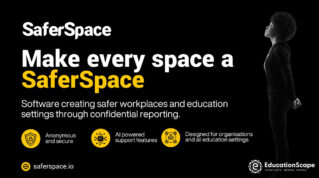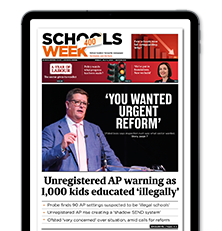Whether it’s a natural disaster, public health emergency, corporate misdemeanour or a school scandal, in times of crisis the way the media behaves is actually… predictable.
Last week, schools across the country, from Cornwall to Liverpool made the national press for the wrong reasons. When an issue or crisis occurs, it’s vital to communicate effectively to ensure that everyone is informed, safe and reassured. This is particularly true for schools, where parents, staff, and students look to the school leadership to provide clear guidance and support.
Understanding the predictable patterns of media coverage during a crisis can help schools develop effective communication plans that meet the needs of their community.
Humans have a need for stories that follow certain narrative patterns. We want to hear tales of courage, survival against the odds, and justice being served. We want to know who is responsible and that steps are being taken to prevent such events from ever happening again. We interpret events based on our own experiences, perceptions and once the facts are out there, we love to analyse, speculate, and judge… and we do all these at breakneck speed.
There are four stages of crisis media reporting.
Stage one is the ‘breaking news’ stage, where the focus is directly on the incident itself. This is when schools need to provide accurate and timely information to reassure their community. The key question at this stage is: what happened?
Stage two is the ‘victims and response’ stage, where the attention shifts from the incident to the victims and the way the organisation is responding. New information will continue to emerge, but the focus is squarely on the drama of the situation. How many people are involved, hurt, missing, or dead? How is the school responding?
The wrongdoer or suspected wrongdoer will also be scrutinised at this stage. This is the time when reputations can be made or broken, with social media playing a significant role in the conversation.
Humans need stories that follow patterns
Stage three is the ‘finger-pointing’ stage, where the media and public start looking for someone to blame. This is where everyone has an opinion about who or what caused the crisis, and what could have been done to prevent it. It’s where the story is amplified.
Stage four is the final stage. The focus begins to subside, but any missteps at this stage can easily reignite the crisis. In this digital age, a crisis can remain searchable indefinitely, meaning that a school’s reputation can be dented for a very long time.
While it’s impossible to predict when a crisis will strike, it’s essential to be prepared for when it does. The predictability of these four stages means that schools can prepare for crisis communication.
And, where possible, schools should be ready to make a statement within an hour of the event. The statement should:
- acknowledge the situation,
- express empathy for those affected,
- outline any actions being taken to address the crisis.
Social media can be a double-edged sword. A well-crafted social media response can go a long way towards reassuring the public and mitigating the damage to a school’s reputation. But, while it can be an effective tool for communicating quickly and widely, it can also spread misinformation and panic. Schools need to have a clear social media strategy in place, which includes monitoring and responding to social media activity. They need to provide accurate information and counter any misinformation with the facts.
Traditional media outlets also play a significant role in crisis communication. Press releases and interviews with key spokespeople can be effective ways of communicating with the public during a crisis.
Different types of issues or crises require different communication strategies; You will need to decide whether a reactive or proactive approach is best. But regardless of the approach, it’s important to be transparent and honest. It’s better to acknowledge mistakes and take steps to address them than to try to cover them up.
The public is more likely to forgive an organisation that takes responsibility for its actions than one that tries to deflect blame.












Your thoughts